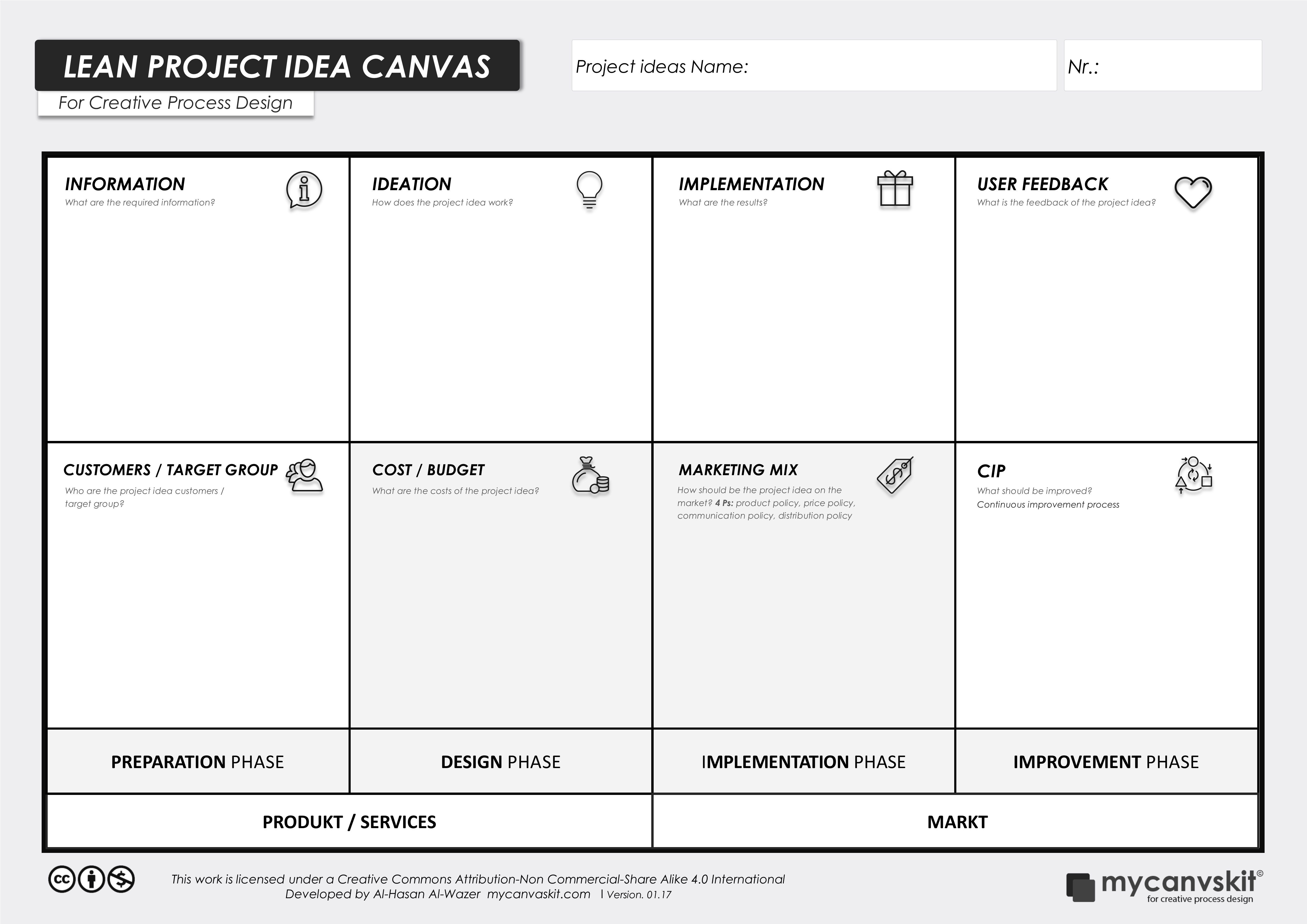The fact that the environment in which we find ourselves is constantly changing is something we have already internalized, so if we want to be competitive and maintain (or improve) our position in the market, we have to speed up how we do things.
This doesn’t mean we should carry out our tasks in a rush, nor does it serve as an excuse for not stopping to reflect and define a strategy. On the contrary, confronting the market with a strategy and a plan which is adaptable to any evolution is essential, because this ever changing environment doesn’t give second chances.
What has to be rethought is the way we were doing things, discarding traditional models, not spending time writing an extensive and detailed Business Plan and looking for a collaborative and efficient working methodology.
One of the tools that allows you to make a more efficient approach for the strategy of a digital product are the "canvas".

A "canvas" allows you to collect all the necessary information on a single page, that way it is understood much better. It allows you to organize in a logical and visual way the way in which companies create value, reflecting in a single sheet the strengths and weaknesses in order to obtain the complete picture.
It is already a very powerful tool, but in Paradigma we have verified that it can be even more so if it is done within an agile dynamic.
Working with dynamics
For the undertaking of these dynamics, a special infrastructure or sophisticated materials is not neede. If you decide to try it out, we give you a series of recommendations that can help you increase the value of the result of these dynamics:
- Choose the participants wisely. Summon a multidisciplinary team that can provide different points of view, and involve the people who will make the decisions in the company. In addition to obtaining greater quality and reliability from the result, the team gets more involved in the upcoming steps.
- Ideal there should be between 6 and 10 participants, without the need to include in the call anyone who can not contribute. If it is important that there are more participants, it is better to separate them into groups for the ideation and then to make a pooling of each.
- Identify who will be the leader or moderator of the dynamics. Whoever does it should have experience in leading these types of exercises and not participate in the session. Their main role will be to keep track of the time, to have all the attendees participate and to become an active listener of the interventions and debates in order to guide the session towards the established objective. If the group is large, it may be useful to have two moderators.
- Allow sufficient time. From our experience, it is difficult to make a quality canvas in less than 4 hours. Sometimes even several sessions are necessary.
- No mobiles or laptops. Participants need to be focused for ideas to flow, so keep any interruptions as far as possible.
- Reserve a room where there is enough space for all the participants to work on the canvas.
Different types of canvas
Business Model Canvas
It is the original canvas to define or refocus business strategy. Created in 2008 by Alexander Osterwalder, the canvas or canvas in two zones consists of using the left area of the canvas to evaluate internal agents to the company and the right area to analyze the environment. In this way, we can represent the business as a relationship between 9 blocks of different areas: customer segments, channels, customer relationships, value proposition, key activities, key resources, key partners, revenues and costs.
Lean Canvas
From the merge of the Business Model Canvas with the Lean methodology, the Lean Canvas emerges. It has a simpler approach to problem solving which is designed for entrepreneurs and startups, but it can be used beyond this scope. For example, it can be applied in projects that are about to start up or to strengthen the structure of already established companies.
In the case of the Lean Canvas, the blocks on which they work are: customer segments, problems, value proposition, solutions, channels, income streams, cost structure, metrics and differential advantages of the brand in relation to its competitors .
The fundamental difference with the Business Model Canvas is that, in the former, the canvas is divided into two parts (environment and company). While in this case a more practical vision is developed in search of a viable business model, the right side of the environment is preserved, but the left side focuses on reflecting on the products or services to be offered.

Value Proposition Canvas
Designed by the same creator as the Business Model Canvas, Alexander Osterwalder, it aims to better understand customers and build products or services that truly have value for them. It focuses on two blocks present in the previous canvases: the customer segment and the value proposition.
It consists of three elements: customer profile, value map and, finally, the third element of the model, when both parts match, or the fit. In this way, using this tool we can contrast the needs of the client with the value proposition to create, thus avoiding wasting time with ideas that do not work.
The Value Proposition Canvas can be used separately to help design a product or service, or in conjunction with the Business Model Canvas or Lean Canvas to work on the value proposition part that includes both in the central part.
[caption id="" align="aligncenter" width="802"]
Copyright: Strategyzer AG[/caption]
Conclusion
Canvas are useful tools to define the strategy to follow in the design of digital products.
However, they do not have to be a still photo. The results that are generated can not be forgotten, they have to be dynamic and living documents which are frequently reviewed because the assumptions made today can change at any time for reasons which are internal or external to the company itself.
Comments are moderated and will only be visible if they add to the discussion in a constructive way. If you disagree with a point, please, be polite.




Tell us what you think.